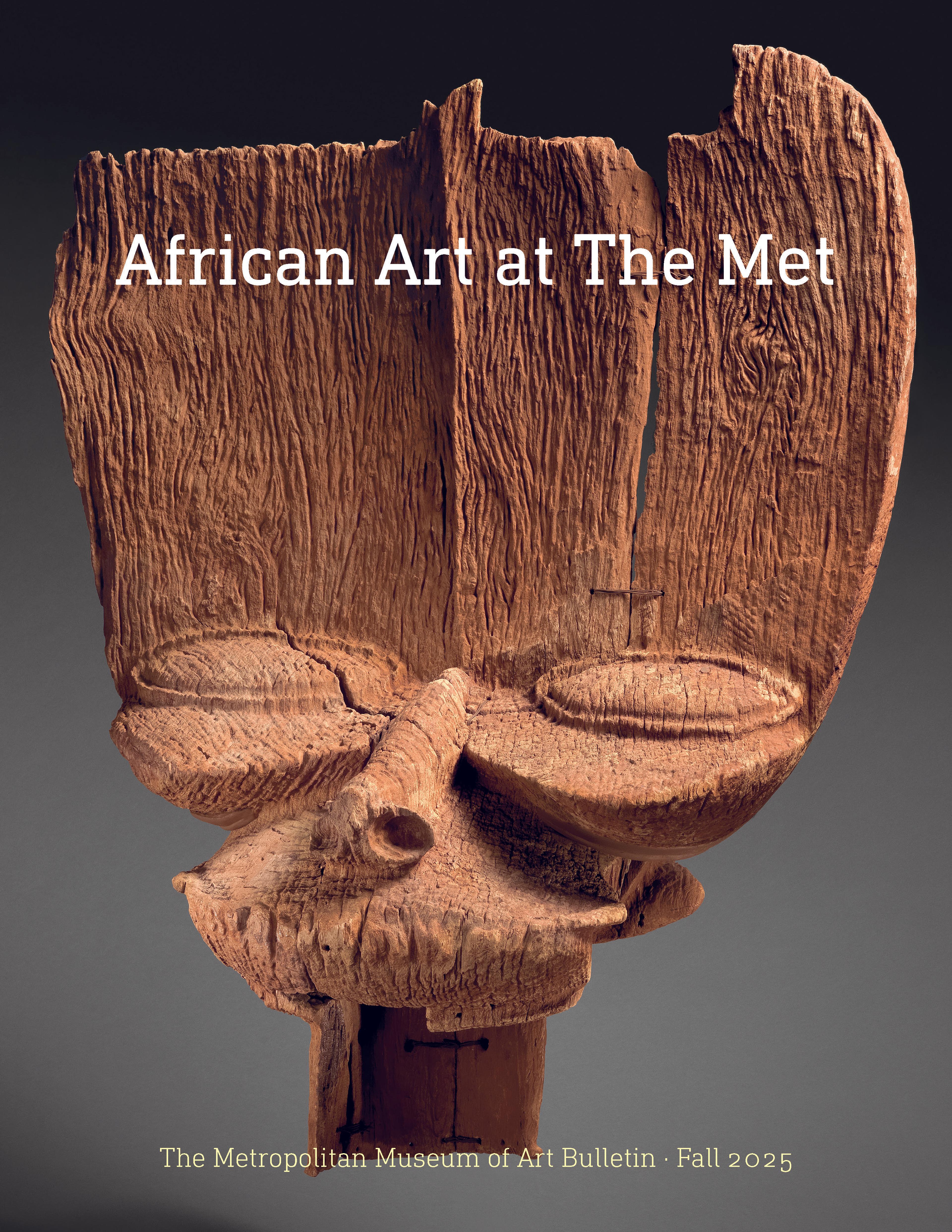Head
Over the past century, ancient stone carvings like this have surfaced in the fields of farmers in southern Sierra Leone. Little is known about the early history of this corpus of several thousand surviving sculptures. Referred to as nomoli (found spirit) or pomdo (the deceased) by their Mende and Kissi finders, respectively, these discoveries have been understood as wondrous points of connection to a distant past. Scientific analysis of related wood and ceramic figures dates this tradition back to as early as the tenth century C.E. The subjects depicted include seated figures, sculpted heads, and human-animal hybrids. This example is notable for its exceptional size. Art historian Frederick Lamp has hypothesized that such creations relate to royal or ancestral memorials commissioned by the Sapi, the name used by early Portuguese traders for the predecessors of today's Temne and Bullom communities.
Artwork Details
- Title: Head
- Artist: Temne or Bullom artist(s)
- Date: 12th–16th century
- Geography: Sierra Leone
- Culture: Temne or Bullom
- Medium: Steatite
- Dimensions: H. 10 3/16 x W. 8 1/2 x D.14 1/4 in. (26 x 21.6 x 36.2 cm)
- Classification: Stone-Sculpture
- Credit Line: The Michael C. Rockefeller Memorial Collection, Gift of Nelson A. Rockefeller, 1965
- Object Number: 1978.412.375
- Curatorial Department: The Michael C. Rockefeller Wing
More Artwork
Research Resources
The Met provides unparalleled resources for research and welcomes an international community of students and scholars. The Met's Open Access API is where creators and researchers can connect to the The Met collection. Open Access data and public domain images are available for unrestricted commercial and noncommercial use without permission or fee.
To request images under copyright and other restrictions, please use this Image Request form.
Feedback
We continue to research and examine historical and cultural context for objects in The Met collection. If you have comments or questions about this object record, please contact us using the form below. The Museum looks forward to receiving your comments.
